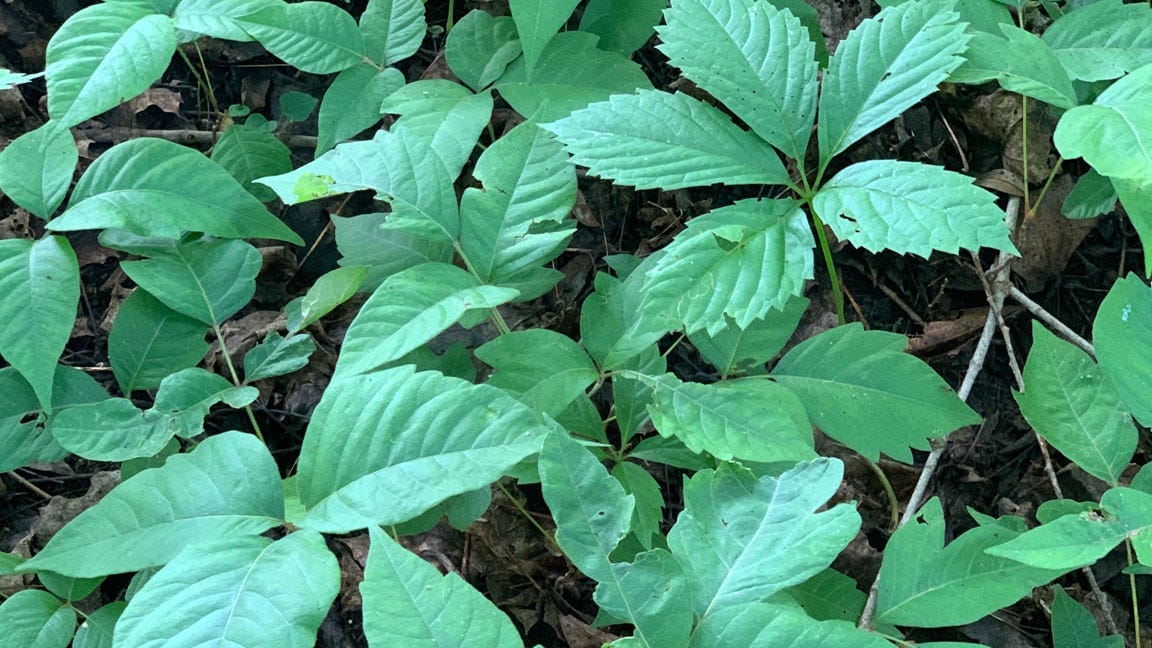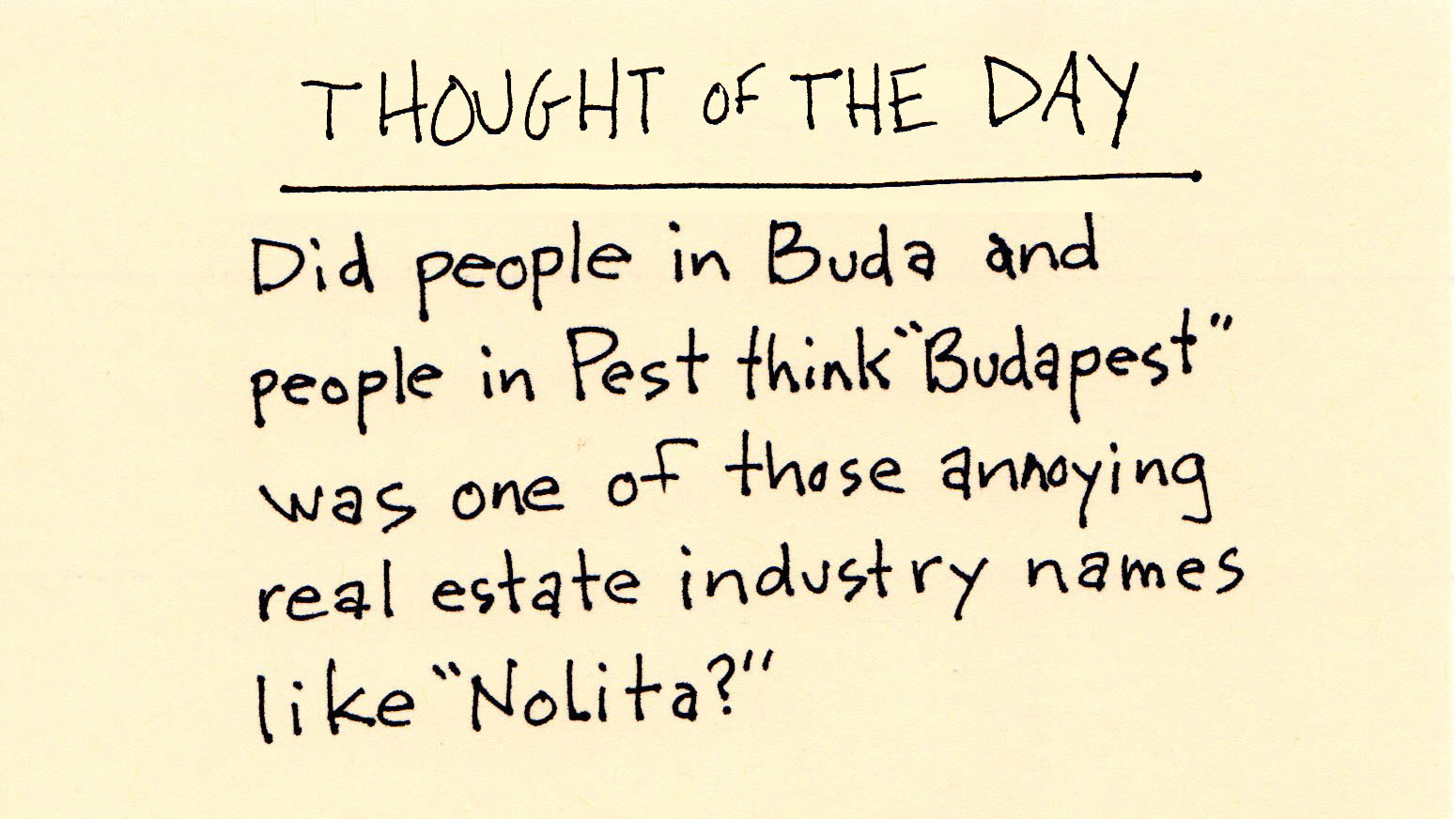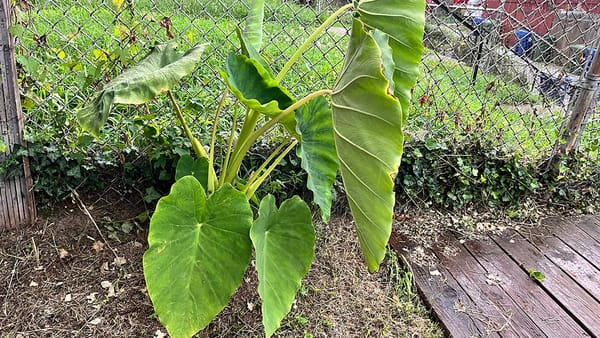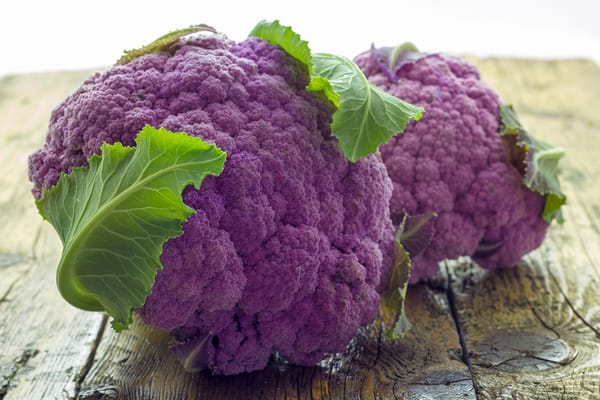Indignity Vol. 1 No. 10: The itch of recognition.
NATURAL HISTORY DEP'T.

How to Tell Virginia Creeper From Poison Ivy: Is It Worth It?
EVEN IN THE more civilized or artificial woods, it's hard to keep the boundaries clear at this point of the summer. The August growth is overspreading the edges of the pathways, and in among it, as always, is the menace of poison ivy. Or is it harmless Virginia creeper?
The distinction seems like it ought to be easy. The timeworn poison-ivy warning says: leaflets three, let it be. Virginia creeper has five leaflets. That's not how recognition works, though, in the woods, with an itchy rash at stake. Poison ivy is highly variable—red or green; matte or shiny; climbing trees or spreading over the ground—but over time, all those different possibilities somehow clump together into one very primal-feeling gestalt. Sometimes, I may see a three-leafed plant and wonder, "Is that poison ivy?" yet when I see actual poison ivy, I know it instantly and unhesitatingly, as surely as the ancient monkey wiring of the human brain knows the slither of a snake in the weeds.
"I have almost a reflexive reaction to it, like, as I'm hiking and I'm about ready to go into a patch of it," Robert Naczi, the curator of North American botany at the New York Botanical Garden, told me on the phone. "I just stop suddenly and I'll look around and see if there's an alternative route."
Unlike a professional botanist, however, I have a persistent, lifelong flaw in my poison ivy reflex: I also get it when I see Virginia creeper. My primitive brain refuses to learn to overlook it. Virginia creeper shares poison ivy's variability, but I can tell the two plants apart, easily and always, in a second. Just not instantly. Before the rational knowledge takes over, that initial, pre-rational alarm has to go off.
What I'd noticed through the years, though, and what I'd wanted to talk to Naczi about, was that most of the time, the false alarm might as well be correct. When you see Virginia creeper, you're often enough about to find poison ivy anyway. You might already be standing in some. The five-leafleted plant may be technically innocent, but it keeps bad company.
To say there's no difference would be botanically irresponsible. It's not always true that the two grow together, Naczi noted. There can be patches of one without the other, and Virginia creeper in particular tends to climb higher than poison ivy—just how high might not be visible until the fall, when if its supporting tree drops its leaves first, the Virginia creeper's deep red leaves will be visible up 50 or 60 feet off the ground. The climbing mechanisms they use are distinct: poison ivy grows hairy-looking roots into the air from its stem to hold on to things, while Virginia creeper puts out little branches tipped with adhesive discs.
But this is not like when people see ordinary, widespread staghorn sumac and claim to have encountered poison sumac, which grows only in nutrient-poor wetlands. (If your feet weren't wet, Naczi said, you didn't see poison sumac). Poison ivy and Virginia creeper, he said, are "very, very similar in their niches." They are climbing woody vines—lianas is the technical name—that have been steadily growing where sunlight breaks into North American forests for the past 10,000 or more years, since the last glaciation retreated. They prefer soil that's moderately moist and relatively nutrient-rich, Naczi said, but they can tolerate a broad range of available moisture and nutrients. And although they can grow in full light, they seem to thrive on the partial light around edges and gaps in the trees.
So they show up in the same places, and flourish side by side. Poison ivy may be in an endless state of over-retaliatory warfare against the animal kingdom, but it makes peace with Virginia creeper even as they angle for the same sunshine. "I'm speculating here," Naczi said, "but I think they're probably both about equal in their competitive abilities, that one is not capable of dominating the other."
Their resemblance, he said, testifies to the power of convergent evolution. They are not at all closely related—poison ivy belongs in the cashew family, while Virginia creeper is with the grapes—yet they appear to have solved the same design problems in much the same way. "For some reason, it's advantageous to them to have compound leaves, for example, or to have leaves that early in the spring as the leaves are developing are reddish," Naczi said. "Some of those things, like the reddish leaves, transcend being a liana at the edge of the forest—a lot of other early spring native plants have their leaves when they're emerging that are red."
And they both find our current world congenial. While their fellow native liana, American bittersweet, is being crowded out by invasive Asian bittersweet, poison ivy and Virginia creeper have so far been able to keep their aerial roots or sticky stems dug in where they've been for millennia. European settlement and development put more fertilizer into the soil, through the burning of nitrogen-rich fuel, and the woodlands suffered more and more broken edges, creating more and more space with partial sunlight. Where they once scrambled for an occasional opening in a dense and diverse forest, they now sprawl out together into a diminished ecosystem. Every warning sign in nature ends up pointing to the same dangerous species.

THOUGHT DEP’T.

Do you have a thought? Send it to indignity@indignity.net.






